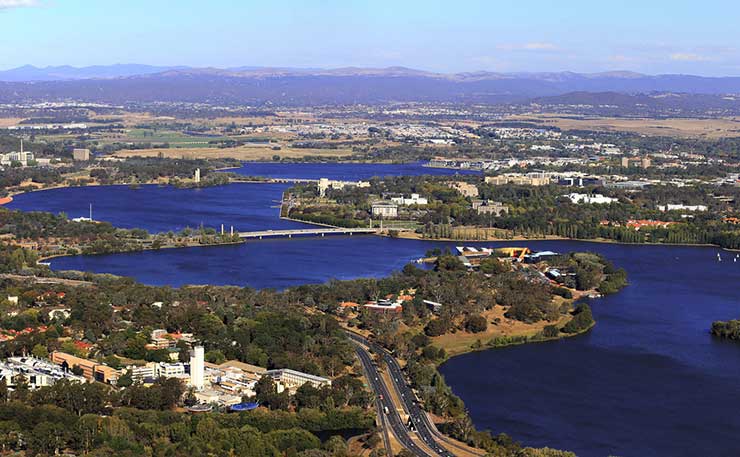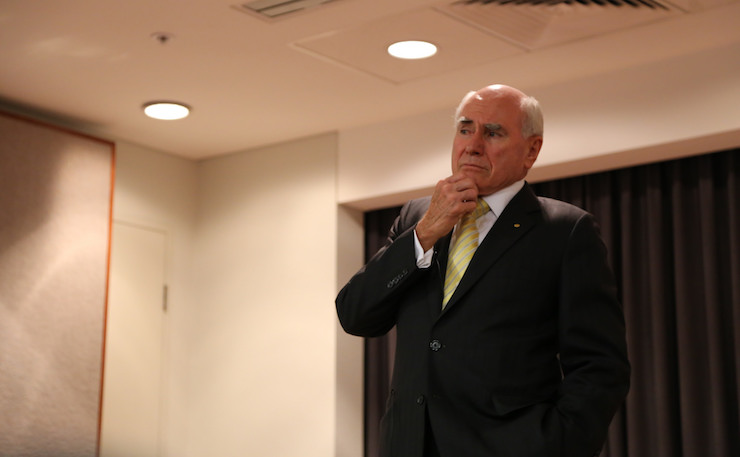The ACT elections passed with barely a flicker outside the nation’s capital. But Ian McAuley thinks the Liberals’ loss tells a pretty big story.
While votes from last Saturday’s ACT election are still being counted, it’s clear that the Liberal Party has failed to win government. The final outcome will be a Labor majority, a continuation of the Labor-Green cooperative arrangements, or even a Labor-Green-Sex Party grouping.
Apart from a proliferation of billboards along roads, streets and even walking tracks in the bush, the election campaign was low-key. No-one bothered to run and publish pre-election opinion polls: the closest we had to an opinion poll was a betting agency’s odds – $1.17 for a Labor win and $2.00 for a Liberal win.
The billboard campaign itself was revealing. The Liberal Party and Independents put out most billboards, but when driving past it was hard to detect any party identification. For the most part the messages were either anti-Labor-anti-Green, or simply a picture of the candidate with no clear party identification.
In part this reflects the uniqueness of the ACT’s electoral laws that go against traditional “how-to-vote” groupings (candidates within parties compete with one another), but it surely also reflects the difficulty of promoting the “Liberal” brand in the national capital.

Canberra, like Washington DC, tends to vote to the “left” of the rest of the nation. For example, in 1999 it was the only state or territory to vote for a republic, and it did so with a resounding majority. Also public servants are unlikely to be enthusiastic about the Liberal Party’s stated belief that “businesses and individuals – not government – are the true creators of wealth and employment”.
It’s hard to show affection or respect for an employer who asserts that your work is worthless.
It’s unsurprising then that since 2001, Labor – or a Labor-Green grouping – has won every ACT election. Last Saturday night’s Labor victory ensures that a Labor-dominated government, because of the Hare-Clark countback system for filling casual vacancies, will be in office until at least 2020.
The only passion in the campaign was around a light rail line connecting the northern suburbs with the city, and work has already commenced on the project.
Because the light rail doesn’t have a positive benefit-cost ratio the Liberal Party identified it as a waste of public funds and promised to cancel the contracts and divert the funds to new mini-hospitals (to the surprise of health specialists) and to cuts in foreshadowed increases in rates.
As it was, light rail paid dividends for Labor, with a strong swing in the northern seat of Yerrabi (one of five multi-member electorates), but Labor also did reasonably well in the rest of Canberra.
In time, as Canberra grows and as development concentrates along the light rail route, people will almost certainly look back and praise the government for its far-sightedness.
Otherwise the campaign was about small-town matters. Because the ACT government has both state and local government responsibilities, many campaign issues were about what would be in the realm of administrative matters in most other jurisdictions – widening of local roads, re-routing buses, positioning of cycle lanes and so on.
The Canberra Times, normally liberal in its content, tried to stir some interest by editorialising in favour of the Liberals on election eve – mainly on an “it’s time” basis. Indeed the Labor Government has been looking weary, and like its NSW counterpart, has been nudging a bit too close to property developers.
The ACT Liberal Party, although dominated by a strong “right” faction, had the good sense to endorse some of Labor’s progressive policies, such as a commitment to electricity to be supplied from 100 per cent renewable sources by 2020. But in the election the Liberals lost ground.
Just as the national media wouldn’t give much attention to an election for Sydney’s Canterbury-Bankstown Council, with a population the same as Canberra’s, the ACT election hasn’t been a headline grabber. But the election results carry two messages with national relevance.
The first is that this is the sixth consecutive election in two years with a strong swing against the Liberal Party or its coalition partners, as shown in the table below.
| Election date | Jurisdiction | Percentage primary swing to Labor | Percentage primary swing away from Liberal | Percentage two party swing to Labor |
| Nov 2014 | Vic | 1.8 | -1.6 | 3.6 |
| Jan 2015 | Qld | 10.8 | -8.3 | 14.0 |
| March 2015 | NSW | 8.5 | -3.5 | 9.9 |
| July 2016 | Federal | 1.4 | -3.4 | 3.1 |
| Aug 2016 | NT | 5.7 | -18.8 | 14.3 |
| Oct 2016 | ACT | 0.2 | -2.5 | NA* |
| * In a Hare Clark system it is hard to ascribe TPP votes to either party. | ||||
These results are echoed in opinion polls. The latest Essential Report has Labor ahead of the Coalition and with increasing support in Queensland, South Australia, Victoria and Western Australia, and level-pegging with the Coalition in NSW (before Premier Baird’s backdown on greyhound racing).
Federally a variety of polls show that the Coalition has lost two to three per cent support since the election. It’s been a remarkably short honeymoon.
There is a message in these figures, and surely the backroom strategists in the Liberal Party are poring over similar or more detailed tables. Some are probably comforting themselves with rationalisations about local factors such as the CLP’s crippling dysfunction in the Northern Territory and a statistical reversion to the mean in Queensland and New South Wales.
Such rationalisations, however, cannot explain away what looks like a trend, but Liberal Party politicians seem to have difficulty in admitting that their policies may be off track.
When the ACT Opposition leader Jeremy Hanson graciously conceded defeat on Saturday night he ascribed his party’s loss in part to Labor’s well-organised campaign and to a swing back from the Liberals’ high vote in 2012. But he gave no hint of any shortcoming in his party’s policies. In fact his concession speech was essentially a re-assertion of his party’s platform.
It’s extremely rare for Liberal or other Coalition politicians to ascribe a loss or big swing to misguided policies. A rare exception was John Howard’s admission in 2007 that “Workchoices” may have had something to do with his government’s defeat, but even that admission was issue-specific, and the Liberals, particularly at the federal level, are unwavering in their assertion that Australians seek “small government” and tax cuts in preference to government services.

The party is possessed by a smug and patronising arrogance, an arrogance grounded in a “born-to-rule” mentality. If we fail to vote for the Liberals or their Coalition partners it’s because we are too stupid to know what’s good for us.
That leads to the second revelation from the ACT election. It was in the central seat of Kurrajong, centred on Lake Burley Griffin and running north of the city centre and south from Parliament House, that Labor plus Green support was highest, with a primary vote of 58 per cent.
This seat roughly covers Canberra’s 1970 footprint, and has a diverse mixture of students, professionals (including public servants) and retirees. In many ways it’s the same as the inner regions of other Australian cities. Also, in common with those areas in other cities, it has high property prices and therefore some hefty bills for rates.
The ACT Government has been innovative in shifting property taxes towards rates and away from stamp duties on home buyers – a move that has obvious equity benefits for first home buyers, but which a political advisor would describe as a brave move.
In this election, and in the previous 2012 election the Liberals promised to wind back this policy. But in neither election has this appeal to monetised self-interest gained any traction. Promised tax cuts – in this case in the form of municipal rates – have not been effective.
Maybe it’s that Canberra’s public servants are adept at recognizing bad public policy and feel compelled to vote against it, even if it’s against their immediate self-interest. Or maybe it’s that people aren’t quite as materialistic and selfish as Liberal politicians take them to be.
I leave it to readers to contribute their own interpretations of these figures. Comments below.
Donate To New Matilda
New Matilda is a small, independent media outlet. We survive through reader contributions, and never losing a lawsuit. If you got something from this article, giving something back helps us to continue speaking truth to power. Every little bit counts.





